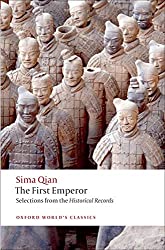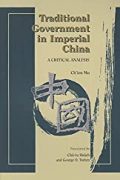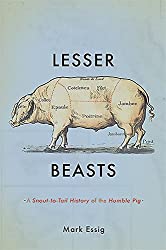
Rating: 7.5/10.
An academic history book about everything you wanted to know about the Tang Dynasty (618-907 AD), considered one of the Chinese Golden Ages, is organized by topic and written in a fairly academic tone. It may be a bit long-winded for a casual audience, as it makes an effort to be detailed rather than to provide an interesting narrative.
Chapter 1: Geographical characteristics of the Tang empire. The expansion of the Tang Empire into frontier regions often led to deforestation. The Guanzhong region (centered around Chang’an) remained the original heartland, but over time, the economic center shifted towards the Yangtze River area, as the south, with its abundant water and more navigable rivers, proved better for agriculture compared to the north. Additionally, the Min region, though a part of the Empire, remained relatively isolated due to its geography.
Chapter 2: Overview of the main events during the Tang Dynasty. The dynasty began with Li Shimin‘s victory over the Turks following the dissolution of the Sui Dynasty. Empress Wu faced unpopularity due to her gender; contemporary accounts of her reign should be approached with skepticism. During this period, the capital moved to Luoyang, and the Empire engaged in wars with the Tibetans. Emperor Xuanzong was a capable ruler in his youth, but his later years saw a decline in his effectiveness, culminating in the loss of control over the army, which led to the An Lushan Rebellion. This rebellion, a major turning point for the dynasty, was partly due to the policy of appointing non-Chinese generals, deemed less likely to pose a threat in the court, yet An Lushan, a non-Chinese general, initiated the uprising. Military service in frontier regions was a pathway to societal advancement, but as the Tang Dynasty progressed, power increasingly shifted to non-Chinese commanders. The Tang also developed a comprehensive legal system, influential for several centuries, and established a system of aristocratic families, which largely fell out of favor after the An Lushan Rebellion.
Chapter 3: Overview of the later stages of the Tang Dynasty. During Xianzong’s reign (circa 8th century AD), there was a rise in the power of eunuchs within the court, along with improved relations with the Tibetan Empire. The last three Tang emperors were weak and ineffective in controlling bandits. The late Tang period witnessed the rise of regional powers, the loss of central control over them, and the inability to collect taxes from more distant regions.
Chapter 4: Urban Life – The structure of the city of Chang’an followed a grid-like pattern, featuring an imperial palace off-limits to commoners. Several Buddhist pagodas, still standing today, were scattered throughout the city. Prostitution was common, with several types of accepted commercial arrangements in place. The city hosted several markets that sold goods from trade across the region.
Chapter 5: Rural Life – There was a significant discrepancy between state records and the reality of rural land ownership. It was common for families to hold landholdings geographically distant from each other. Agricultural improvements included the plow, crop rotation, and water control for irrigation and flood management. Waterways were heavily used for trade, marking this era as the beginning of widespread tea and sugar consumption.
Chapter 6: Relationships with the Non-Chinese World. The Tang Dynasty only briefly controlled Turkic areas before losing them to the Islamic world. Korea, Vietnam, and Nanzhao (in Yunnan) modeled their states after the Chinese and used Chinese writing; they were considered equals in politics and paid tribute to the Tang. Maritime trade was conducted with the Muslim world and ventured into southern China but was not undertaken by the Chinese. Foreigners were common in some southern cities like Panyu (Guangzhou). Although Buddhism entered China, it was seen as a foreign religion compared to the native Confucianism and Daoism.
Chapter 7: Kinship – Princesses often played roles in politics and were frequently married off to neighboring states for political alliances. Concubines, considered lesser than wives but above maids, were common. Genealogy was extremely important, and it was common to claim ancestry from someone famous from the past, or to claim Han Chinese ancestry for those from non-Chinese areas. Entry into the bureaucracy was heavily favored for those from a few “great families,” but there was also the ability to enter through examinations of written samples.
Chapter 8: Religion – Daoism was considered the most prominent religion during the Tang Dynasty, although Buddhism and Confucianism also existed. Buddhism was introduced from Central Asia during this period and was modified to fit the Chinese context. The Confucian classics were thoroughly examined and official annotations were produced to agree on the correct interpretation of these texts.
Chapter 9: Poetry – Poetry was highly regarded and widely practiced by the rulers. It began by imitating styles from antiquity, then evolved over time. The period of High Tang, during Emperor Xuanzong’s reign up until the An Lushan Rebellion, was generally considered the pinnacle of Tang poetry. Li Bai was known for his innovative style, depicting carefree attitudes and excess. Poems were written and collected over a lifetime as prized possessions. Other forms, such as lyrical songs and romances, held lesser prestige. Han Yu developed a style of essay that focused on individuality, deviating from the regurgitation of fixed forms derived from antiquity texts.
Conclusion – The end of the Tang Dynasty saw the decline of the great families, transitioning to a more meritocratic rather than hereditary system. There was also a shift of the economic center towards southern China, a trend that persisted for the next few centuries.



